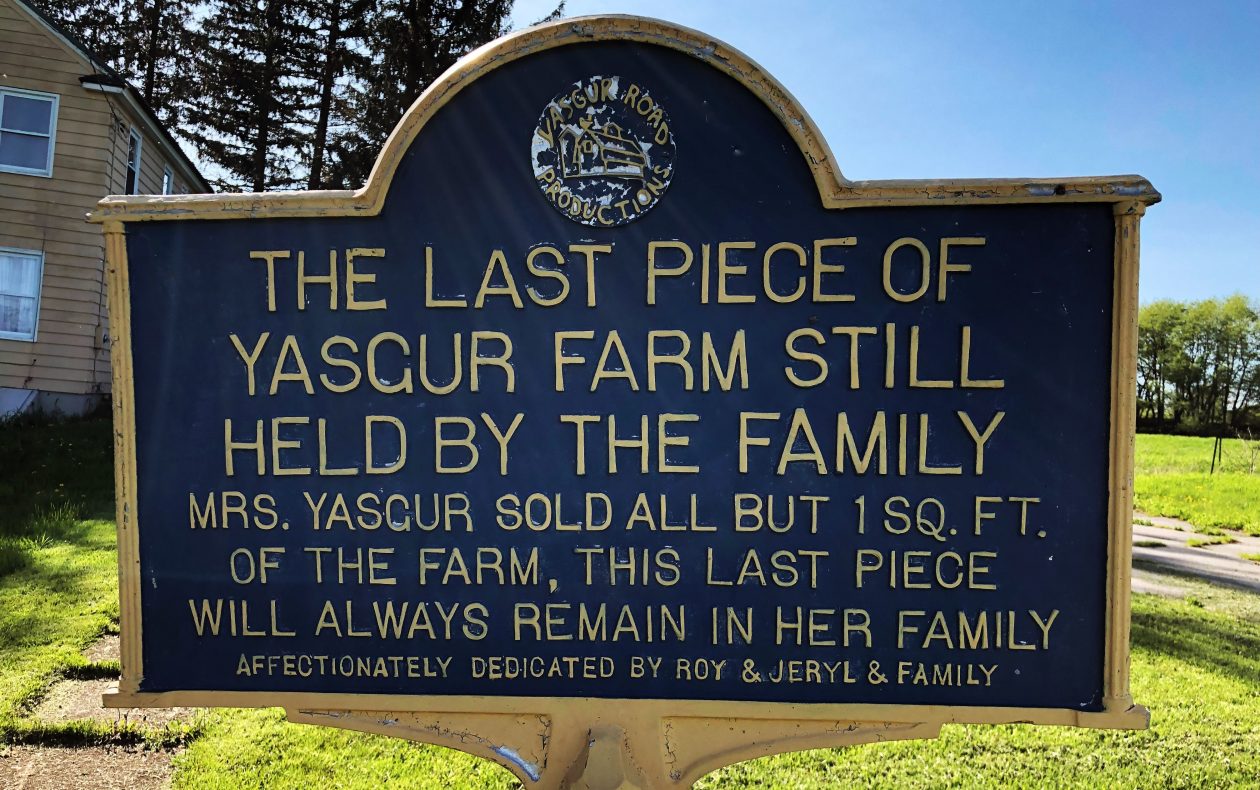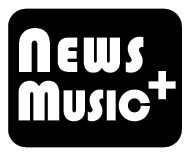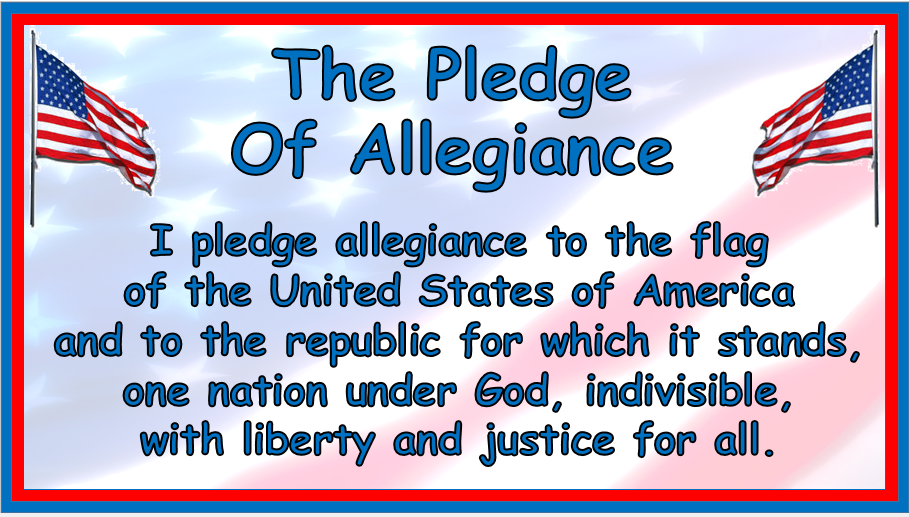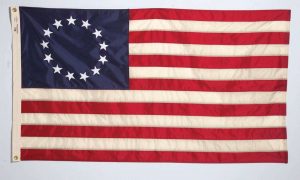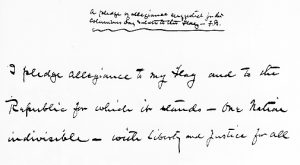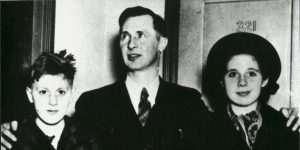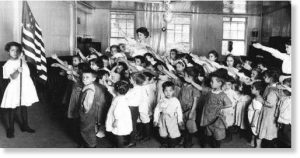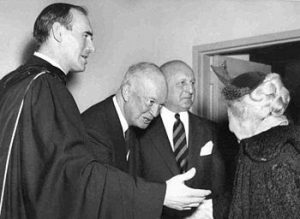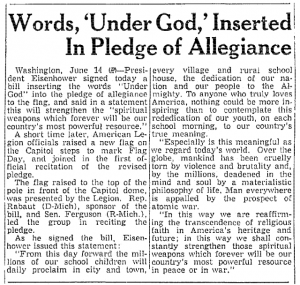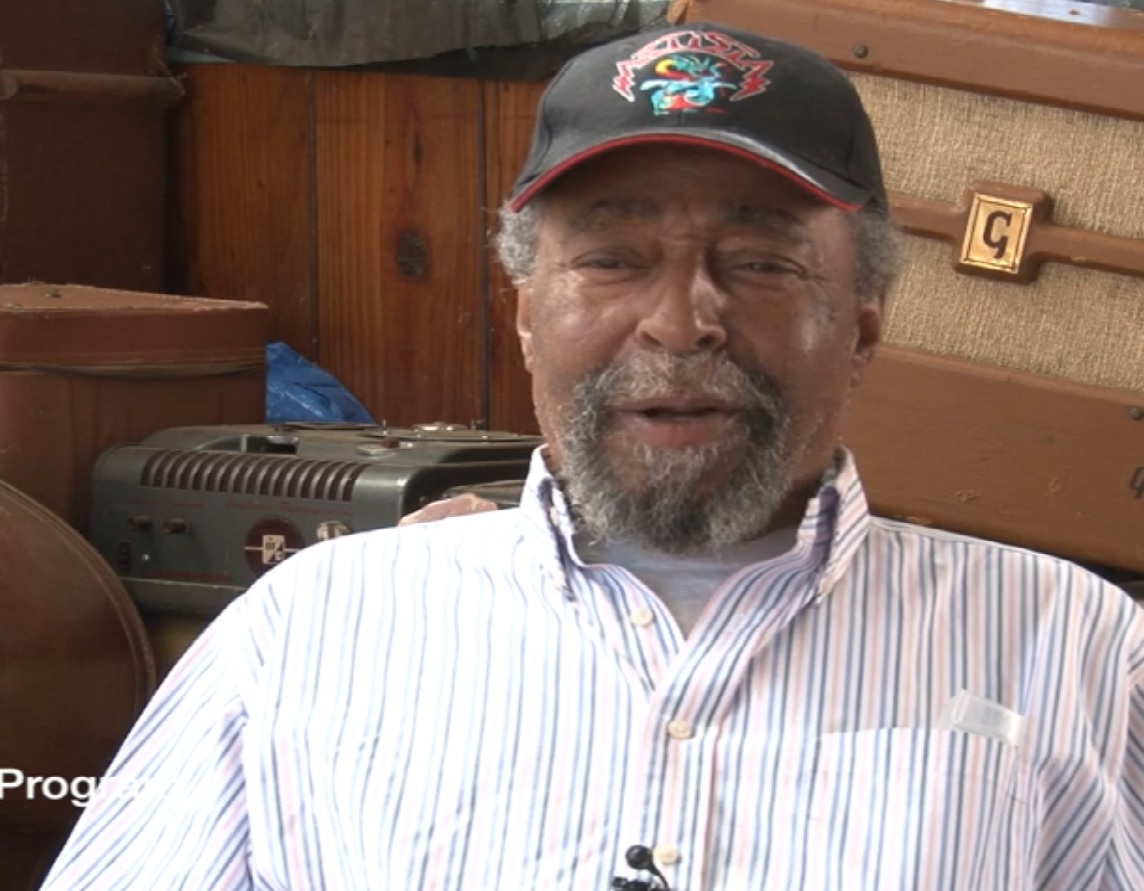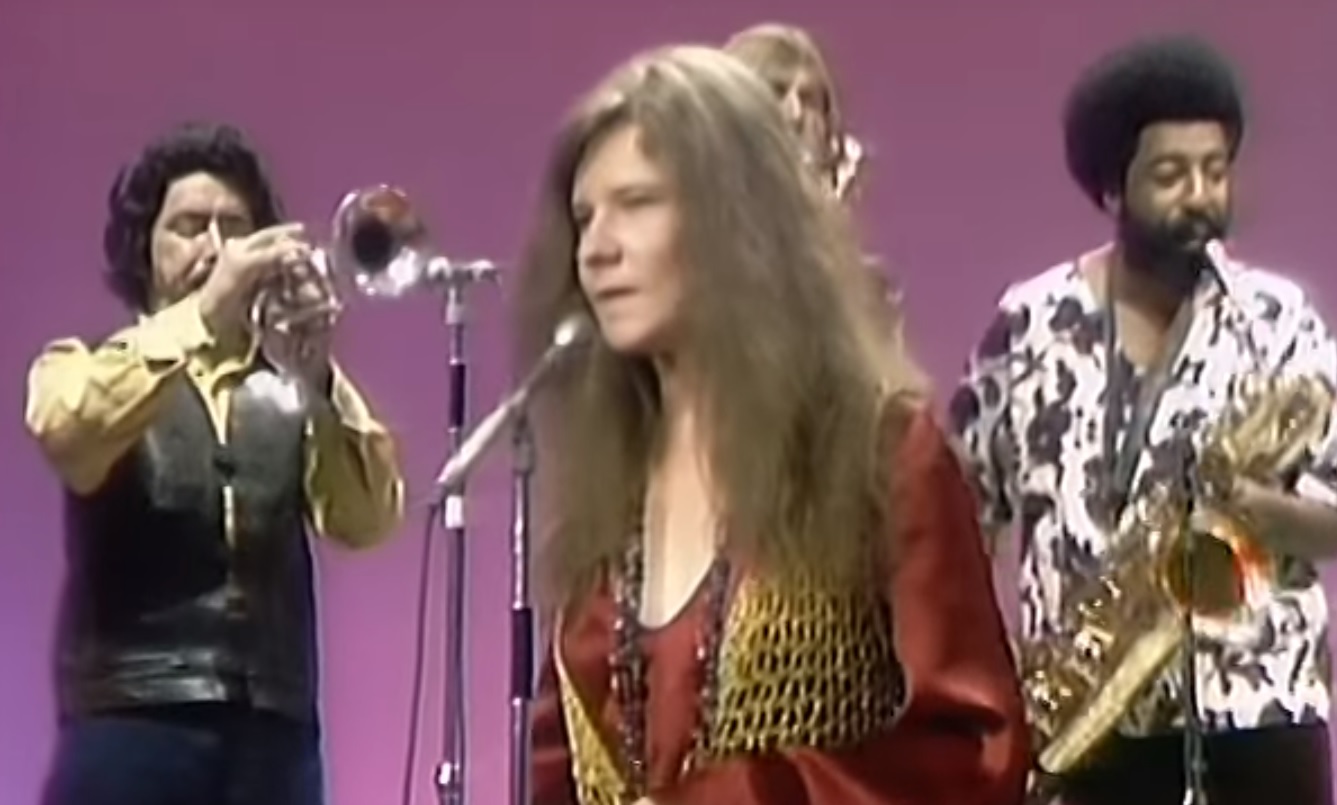Mid 20th Century News Music
This is the second post on 20th century songs that I’ve come to call “News Music.” As the name hopefully implies, the songs’ intent was to implicitly or explicitly comment upon, challenge, or simply point out a social problem.
These examples are from 1941 up to the more famous 1960s.
“Freedom’s Road”
In 1942…Langston Hughes wrote the lyrics, Emerson Harper wrote the music, and Josh White sang “Freedom’s Road” in which they attempted to link the war abroad to the struggle for racial justice at home. (next BH, see Jan 17)
Mid 20th Century News Music
This Land Is Your Land
In 1944…Woody Guthrie wrote the lyrics to This Land Is Your Land (initially titled God Blessed America for Me) in 1940, but not record it until 1944. It was Guthrie’s parody of Irving Berlin’s God Bless America (1938), a song Guthrie felt didn’t express the right sentiment. Guthrie stated: “I am out to sing songs that will prove to you that this is your world…that make you take pride in yourself and your work. And the songs that I sing are made up for the most part by all sorts of folks just about like you.”
Mid 20th Century News Music
The House I Live In
Abel Meeropol, writer of “Strange Fruit,” was an active member of the American Communist Party. [In 1953, he and his wife would adopt Michael and Robert Rosenberg, the sons of Ethel and Julius Rosenberg who were executed in 1953.]
Meeropol taught at the De Witt Clinton High School in the Bronx for 27 years, but continued to write songs, including Frank Sinatra’s 1945 hit, The House I Live In with Earl Robinson.
“The House I Live In” was a 1945 short film written by Albert Maltz and made by producer Frank Ross and Frank Sinatra (as an actor) to oppose antisemitism and prejudice at the end of World War II.
It received a special Academy Award in 1946.
Mid 20th Century News Music
People’s Songs
December 31, 1945: Pete Seeger wrote in the People’s Songs newsletter No. 1: “The people are on the march and must have songs to sing. Now in 1946, the truth must reassert itself in many singing voices. There are thousands of unions, people’s organizations, singers and choruses who would gladly use more songs. There are many songwriters, amateur and professional, who are writing these songs. It is clear that there must be an organization to make and send songs of labor and the American people through the land. To do this job we formed People’s Songs, INC. We invite you to join us.”
Mid 20th Century News Music
I Wonder When I’ll Be Called A Man
In 1946…even though serving in World War I, Big Bill Broonzy (1903 – 1958) realized his country was not yet ready to treat him equally. He wrote, “I Wonder When I’ll Be Called A Man.”
Mid 20th Century News Music
We Shall Overcome
In 1947…Zilphia Horton (1910 – 1956) was music director of the Highlander Folk School of Monteagle, Tennessee, an adult education school that trained union organizers and a place committed to democratic principles. Seeger learned “We Shall Overcome.” there. Seeger included it in a People’s Songs booklet. Martin Luther King, Jr used the phrase in several of his speeches. (see December 10, 1964)
By the mid-1950s, the support of unions and pro-socialistic ideals had so fallen from public disfavor that artists like Seeger looked for another cause to support and effect changes. They found that cause in the civil rights movement.
Mid 20th Century News Music
Finian’s Rainbow
January 10, 1947: Finian’s Rainbow opened on Broadway. Among its songs was “When the Idle Poor Become the Idle Rich” written by Yip Harburg.
Mid 20th Century News Music
“Talking Atom (Old Man Atom)”
In 1948…Pete Seeger recorded the 1945 Vern Partlow song “Talking Atom (Old Man Atom)” which expressed a fear of atomic energy and its possible consequences based.
Mid 20th Century News Music
Deportees
In 1948: Woody Guthrie wrote the words to “Deportees” or “Plane Wreck At Los Gatos” in response to an airplane crash which resulted in the deaths of 32 people: 4 Americans and 28 migrant farm workers who were being deported to Mexico from California. The news media reference to the workers as simply deportees, never mentioning their names, outraged Guthrie. The Mexican victims were placed in a mass grave at Holy Cross Cemetery in Fresno, California. There were 27 men and one woman. Only 12 of the victims were ever identified. In deteriorating health due to Huntington’s Disease, it is considered Guthrie’s last great song. In 1958 Martin Hoffman added a melody to Guthrie’s words.
Mid 20th Century News Music
If I Had a Hammer
In 1949: Pete Seeger wrote and the re-assembled Weavers sang “If I Had a Hammer.” Pete Seeger and Lee Hayes first sang it in New York City at a testimonial dinner for the leaders of the Communist Party of the United States, who were then on trial in federal court. In 1962 Peter, Paul, and Mary’s version became a top ten hit.
During the 1950s, protest was coupled with Communism and suppressed particularly during the McCarthy hearings which investigated the purported infiltration of Communism into all areas of American life. Senator Joseph McCarthy (R-Wisconsin) held these investigations from 1953 to 1954. In 2003, his hearings’ transcripts were released. At that time Carl Levin (Chairman) and Susan Collins (Ranking Member on the Permanent Subcommittee on Investigations), wrote in their Preface to the release of the investigation’s transcripts:
The power to investigate ranks among the U.S. Senate’s highest responsibilities. As James Madison reasoned in The Federalist Papers: ‘‘If men were angels, no government would be necessary. If angels governed men, neither external nor internal controls on government would be necessary. In framing a government which is to be administered by men over men, the great difficulty lies in this: You must first enable the government to control the governed; and in the next place, oblige it to control itself.’’ It is precisely for the purposes of government controlling itself that Congress investigates.
They continued: The phase of the Subcommittee’s history from 1953 to 1954, when it was chaired by Joseph McCarthy, however, is remembered differently. Senator McCarthy’s zeal to uncover subversion and espionage led to disturbing excesses. His browbeating tactics destroyed careers of people who were not involved in the infiltration of our government. His freewheeling style caused both the Senate and the Subcommittee to revise the rules governing future investigations, and prompted the courts to act to protect the Constitutional rights of witnesses at Congressional hearings. Senator McCarthy’s excesses culminated in the televised Army-McCarthy hearings of 1954, following which the Senate voted overwhelmingly for his censure… These hearings are a part of our national past that we can neither afford to forget nor permit to reoccur.
Mid 20th Century News Music
Last Night I Had the Strangest Dream
In July 1951: folk-music magazine “Sing Out!” published Ed McCurdy’s song, “Last Night I Had the Strangest Dream.” McCurdy had written the song in 1950 and Pete Seeger first recorded it on his 1956 album “Love Songs for Friends and Foes”
It has been recorded in seventy-six languages (including covers by The Weavers in 1960, the Chad Mitchell Trio in 1962, Simon & Garfunkel in 1964, Cornelis Vreeswijk in 1964 (in Swedish), Hannes Wader in 1979 (in German), Johnny Cash in 2002, Garth Brooks in 2005, Serena Ryder in 2006, and Charles Lloyd in 2016.
Mid 20th Century News Music
Get That Communist, Joe
In 1954: the Kavaliers sang “Get That Communist, Joe” in which they poked fun at McCarthy’s passion to find Communists everywhere.
Mid 20th Century News Music
Sixteen Tons
In 1955: Tennessee Ernie Ford released “Sixteen Tons,” a song about the hardships of coal mining. The song’s author is generally credited to Merle Travis who first recorded it in 1946.
Mid 20th Century News Music
Keep Your Eyes on the Prize
In 1956: Alice Wine wrote lyrics called “Keep Your Eyes on the Prize” based on “Old Plow,” a traditional song. It is another example of a musician applying a new meaning to an old song.
Mid 20th Century News Music
Oh Freedom
In 1956: Odetta recorded a Civil War era song called Oh Freedom. The song would become one of the many songs that civil rights activists sang during the 1960s.
Last Night I Had the Strangest Dream
Also in 1956, Pete Seeger recorded Ed McCurdy’s “Strangest Dream” [also known as “Last Night I Had the Strangest Dream”] for his 1956 album Love Songs For Friends & Foes. Seeger would later re-visit the song for his 1967 album Waist Deep in the Big Muddy and other Love Songs.
The strong anti-war theme of the song led it to be recorded by multiple other artists, including The Weavers (1960), Joan Baez (1962), The Kingston Trio (1963), Simon & Garfunkel (1964), and Johnny Cash who released two versions of the song during the 2000s.
The song has been recorded by over 50 acts in English, and has also been adapted into several different languages.
Mid 20th Century News Music
Tom Dooley
November 17, 1958: the Kingston Trio’s “Tom Dooley” hit #1 on the Billboard pop chart. While not a protest song, protest folk probably owed its commercial success to the Kingston Trio, three guys in crew cuts and candy-striped shirts who honed their act not in Greenwich Village cafes, but in the fraternities and sororities of Stanford University in the mid-1950s. Without the enormous profits that the Trio’s music generated for Capitol Records, it is unlikely that major-label companies would have given recording contracts to those who would challenge the status quo in the decade to come. Joan Baez and Bob Dylan, for instance, may have owed their musical and political development to forerunners like Woody Guthrie and Pete Seeger, but they probably owed their commercial viability to the Kingston Trio.
